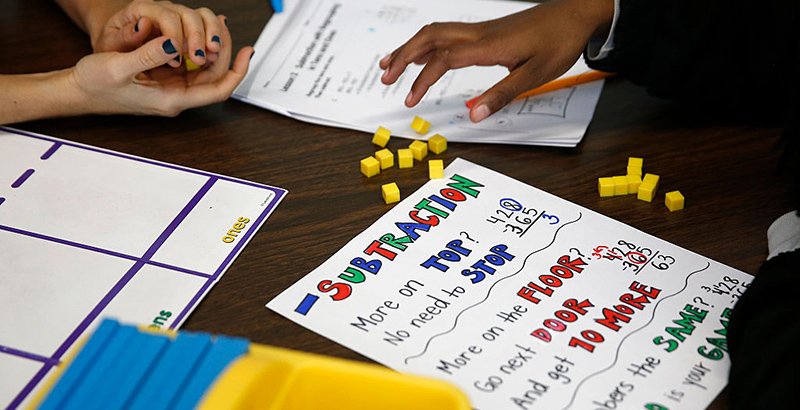Roicki: Math Can Help Teach Students to Make Good Decisions, Inside and Outside the Classroom. Here’s How

Think about the last time you faced a challenging situation. Perhaps you needed to pause and take a moment. You may have weighed how to respond. Once you made your choice, you may have reflected on the result. Was the situation resolved? Left unfinished?
Whether we realize it or not, we constantly make decisions that guide us through our daily lives. Classrooms are no different. Consider the number of daily interactions in a class of 30 students. When students lack good decision-making skills, they can sometimes react to tough situations in negative ways.
Throughout my 15-year career as a classroom teacher, I have experienced several large classes in which reactive and impulsive interactions between students created a challenging dynamic. A few years into teaching, however, I began to draw students’ attention to their choices and the impact those choices have on themselves and their peers. The result: The overall environment improved. The work wasn’t always easy, but I found effective strategies that can help teachers. Below, I describe them.
Feeling safe
For starters, learning environments have to be safe for good decision-making to take place. In my third-grade classroom, we had regular conversations about ways students could help make our classroom physically safe, such as pushing chairs in and keeping hands and feet under control.
When we talked about intellectual safety, we discussed how the students responded to one another’s ideas. Normalizing errors as part of the learning process and learning to respond constructively helped my students learn to take intellectual risks in class.
Emotional safety included empathizing with one another and considering how actions and words make others feel.
Decision-making and mathematical problem-solving
Math really is the perfect content area for building good decision-making skills. Solving math problems involves more than simply finding a single correct answer. Students make decisions throughout the process.
To help develop these skills, teachers should choose tasks that promote analyzing complex situations; identifying givens, constraints, relationships and goals; evaluating their progress; and reflecting on the reasonableness of the solution.
When making sense of problems, students must choose where to enter the problem and plan possible solution pathways. As they work, it’s good practice for the teacher to ask them to select specific tools and defend their choice of those tools. When solving problems, they also need to attend to mathematical relationships in the problem, select appropriate operations to use in their solution and attend to precision in their language, recording and calculations to effectively communicate their reasoning.
Teacher choices affect student choices
When preparing to deliver a math lesson, teachers should try to maximize opportunities for student voice and choice so children develop both strong math skills and good decision-making skills.
A close analysis of a lesson’s problem set reveals an increase in the complexity of the tasks, as can be seen in the image below. This ladder of complexity serves as the teacher’s road map to designing differentiated pathways from which students can choose during the lesson. The teacher can select different combinations of Must Do, Could Do and Extension problems for independent practice, leading each student toward success with the lesson objective in different ways.
In the example below, the teacher made the following selections:

When designing sets of assignments, teachers should allow students to choose their level of challenge while guiding their decision-making. This means clearly communicating the challenge level of each set and keeping track of student choices. In the example, because each set includes Problem 3 as a Must-Do, all students can work toward the lesson objective and participate in the debrief that follows.
When students overestimate the appropriate level of challenge, a teacher can respond in several ways. For example, when a student is struggling with a selected problem, the teacher might ask what she understands about it, what tools she has tried or whether working with a classmate might help. If she needs more support, the teacher could suggest that she look at a simpler problem to get some ideas for tackling the more challenging one.
Preparing and teaching high-quality lessons is not easy. Teachers must balance content with social and emotional skills to meet a variety of developmental needs. But by incorporating opportunities for choice into math learning, teachers can simultaneously tailor instruction to meet student needs, develop students’ math skills and help students practice decision-making.
Those are all worthwhile goals that will serve students in and out of math class, as well as outside school.
Joe Roicki is a program specialist on the professional development and implementation success team for Eureka Math, the PK–12 math curriculum from Great Minds. He taught math to students in grades 2-5 students in New York, Florida and Washington state and supported classroom teachers in grades K-8 for 16 years.
Get stories like these delivered straight to your inbox. Sign up for The 74 Newsletter

;)